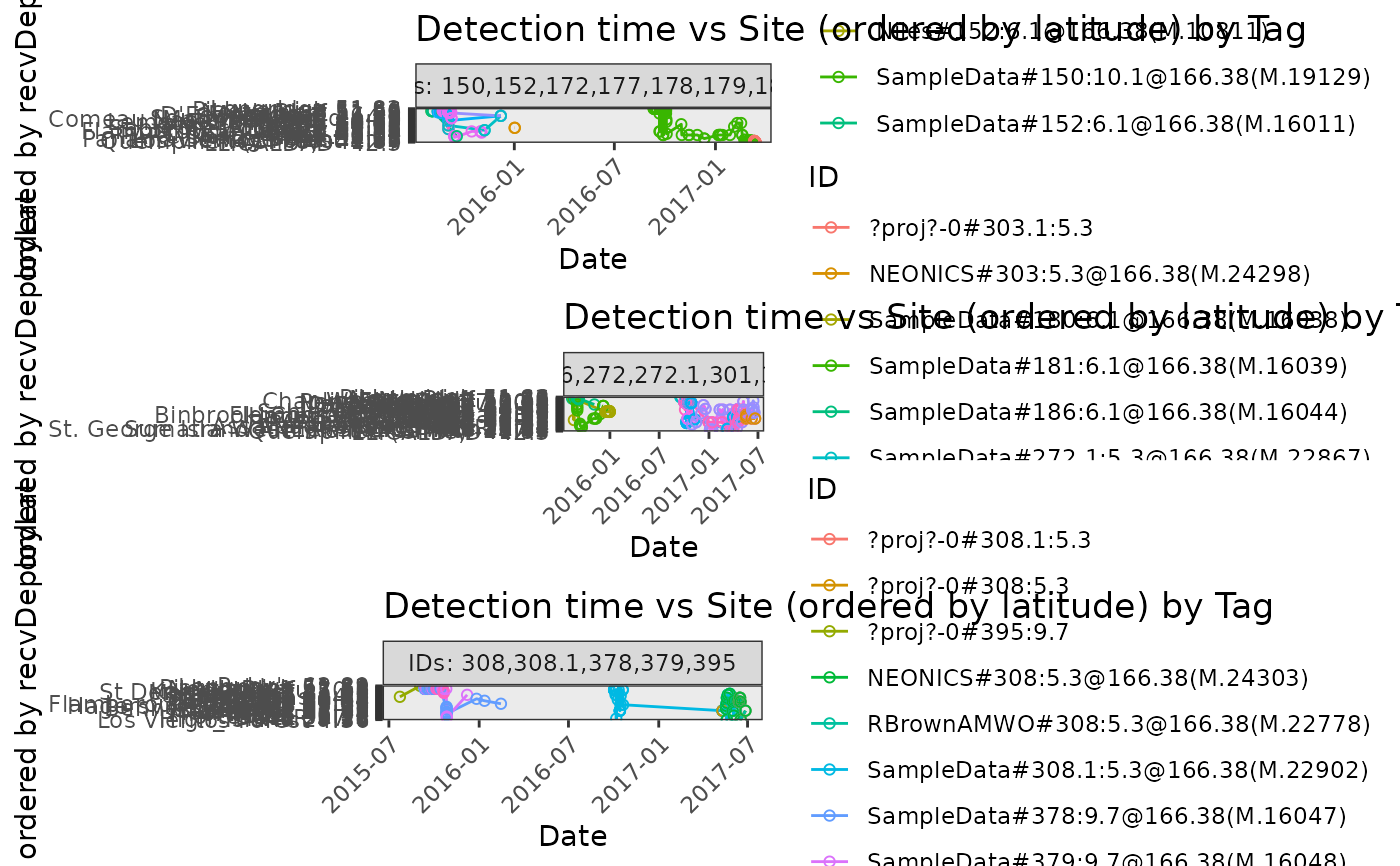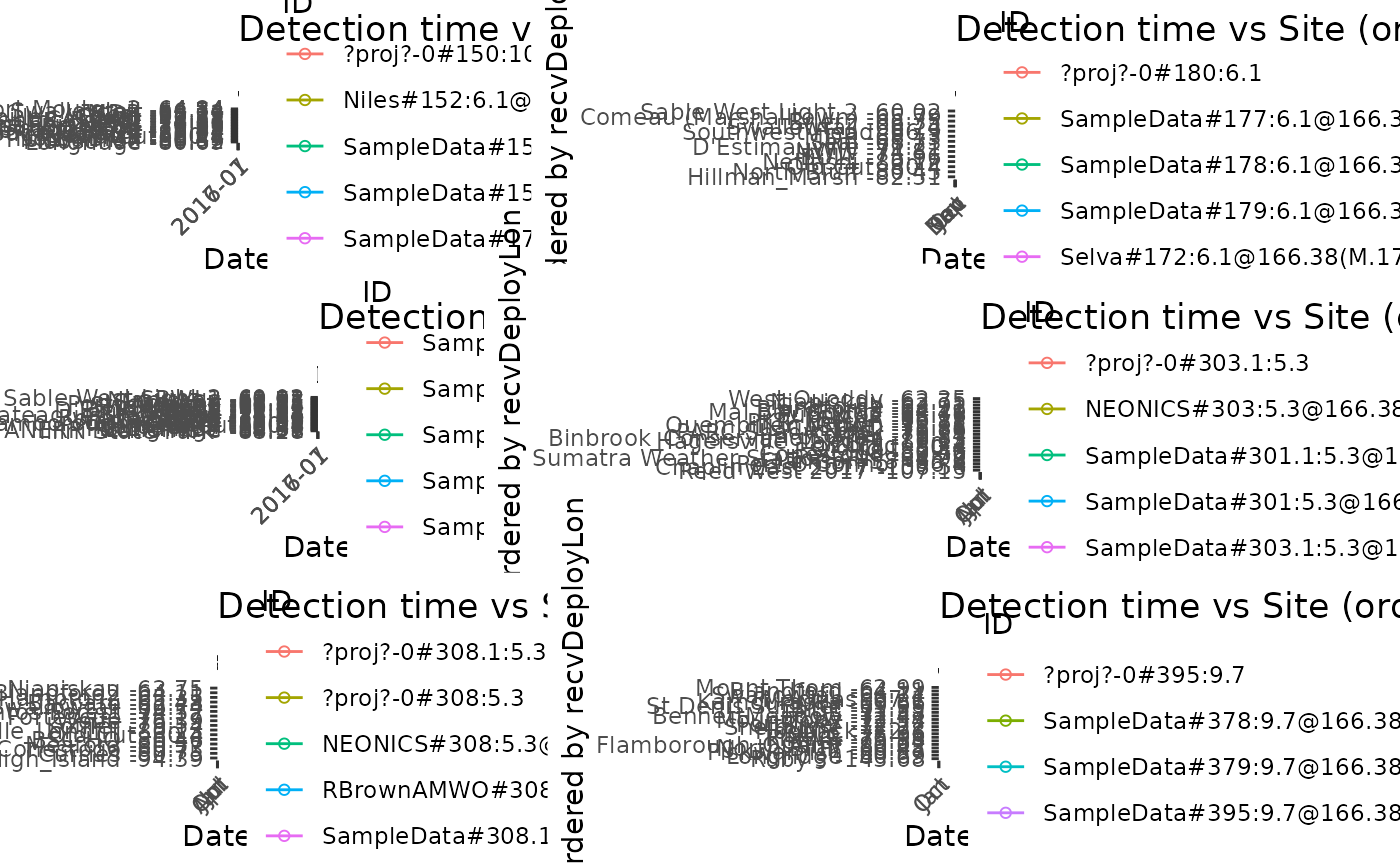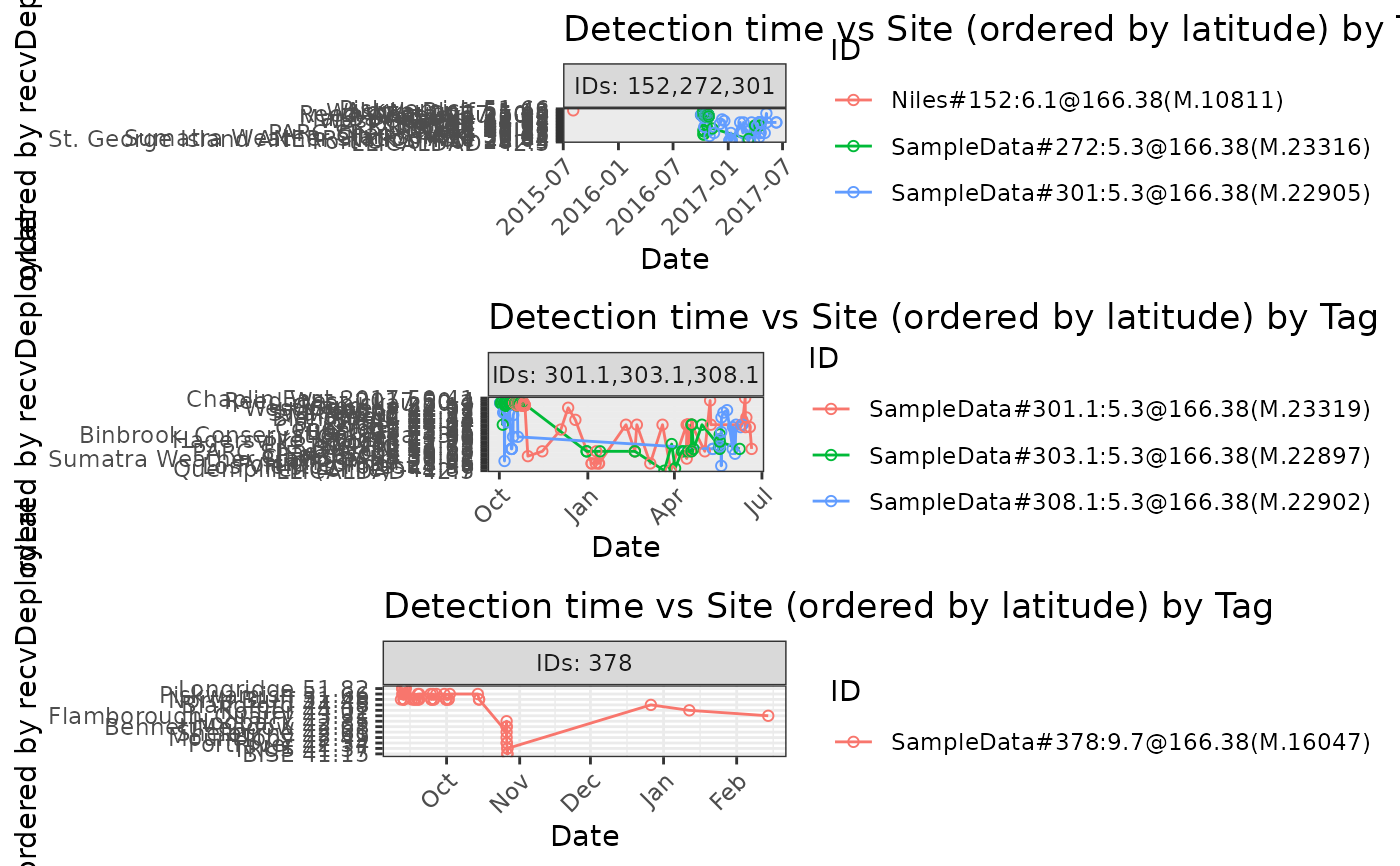Plot deployment (ordered by latitude) vs time (UTC) for each tag
Arguments
- data
a selected table from .motus data, eg. "alltags", or a data.frame of detection data including at a minimum variables for
recvDeployName,fullID,mfgID, date/time,latitudeorlongitude- coordinate
column of receiver latitude/longitude values to use, defaults to
recvDeployLat- tagsPerPanel
number of tags in each panel of the plot, default is 5
Examples
# Download sample project 176 to .motus database (username/password are "motus.sample")
if (FALSE) sql_motus <- tagme(176, new = TRUE)
# Or use example data base in memory
sql_motus <- tagmeSample()
# convert sql file "sql_motus" to a tbl called "tbl_alltags"
library(dplyr)
tbl_alltags <- tbl(sql_motus, "alltags")
# convert the tbl "tbl_alltags" to a data.frame called "df_alltags"
df_alltags <- tbl_alltags %>%
collect() %>%
as.data.frame()
# Plot detections of dataframe df_alltags by site ordered by latitude, with
# default 5 tags per panel
plotAllTagsSite(df_alltags)
 # Plot detections of dataframe df_alltags by site ordered by latitude, with
# 10 tags per panel
plotAllTagsSite(df_alltags, tagsPerPanel = 10)
# Plot detections of dataframe df_alltags by site ordered by latitude, with
# 10 tags per panel
plotAllTagsSite(df_alltags, tagsPerPanel = 10)
 # Plot detections of tbl file tbl_alltags by site ordered by receiver
# deployment latitude
plotAllTagsSite(tbl_alltags, coordinate = "recvDeployLon")
# Plot detections of tbl file tbl_alltags by site ordered by receiver
# deployment latitude
plotAllTagsSite(tbl_alltags, coordinate = "recvDeployLon")
 # Plot tbl file tbl_alltags using 3 tags per panel for species Red Knot
plotAllTagsSite(filter(tbl_alltags, speciesEN == "Red Knot"), tagsPerPanel = 3)
# Plot tbl file tbl_alltags using 3 tags per panel for species Red Knot
plotAllTagsSite(filter(tbl_alltags, speciesEN == "Red Knot"), tagsPerPanel = 3)

